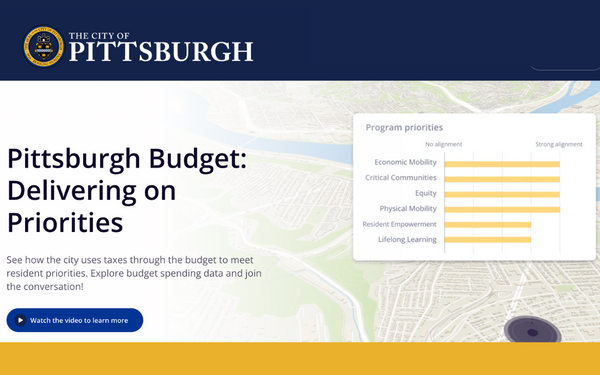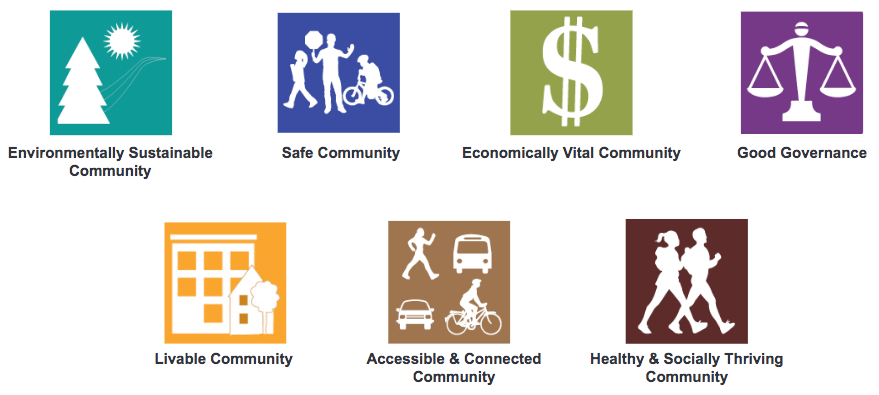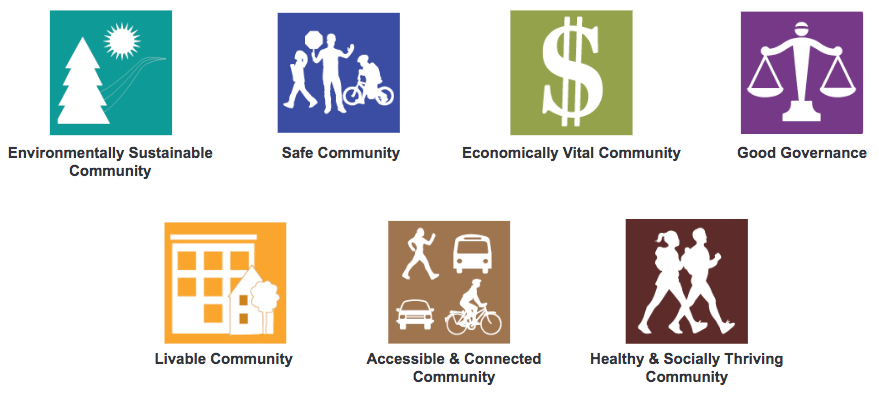A strategic budget is the foundation on which local government services are built on. Taking a strategic approach to budgeting allows administrators to create a roadmap to guide resource allocation and pivot as needed to address changing priorities and emerging community needs.
Budgeting in the public sector requires administrators to balance limited resources with community needs and provide accountability and transparency into the costs and results of providing programs and services.
Priority-based budgeting helps make this possible during every step of the budgeting process by shifting the focus from funding line items to aligning the budget with programs and outcomes.
Let’s take a look at the steps county and city governments follow to create a strategic annual budget, how priority-based budgeting adds transparency to the process, and ways that some innovative cities are keeping residents involved and informed.
Four Step Public Sector Budgeting Process
Every local government has its own approach to the budgeting process, but most follow these four basic steps:
1. Prepare
In the months leading up to the new fiscal year, budget teams begin collecting input to help determine where public funds would be best allocated.
During the preparation period, department heads submit estimates of expenditures and budget requests, including capital, personnel, and operational costs. Budget administrators also solicit public input from residents to ensure the proposed budget addresses the existing and evolving needs of the community.
Priority-based budgeting can add clarity to this step by allowing contributors to create budget proposals at the program level rather than the departmental level, which provides visibility into how the resources will impact the community.
Local government administrative leadership reviews the requests and budget proposals against available resources and priorities, then develops a budget draft and submits it for approval.
2. Approve
When the city council or elected body receives the proposed budget, they review the documents and relevant community input, adjust the proposed budget as needed, and eventually approve the final budget.
Providing priority-based budgeting data to the decision makers during this step adds context that helps them understand which requests are low complexity, which are ongoing or one-time in nature, and which have the highest potential to positively affect leadership's priorities.
3. Implement
Once the budget is approved, the mayor or city manager administers the budget, allocating funds to services and programs as outlined in the budget.
The implementation process is streamlined in cities that take a priority-based approach to budgeting. Program-based budget requests clearly define all of the resources needed, which departments are involved, and how an individual program will improve overall community well-being. This takes the guesswork out of fund allocation and provides benchmarks for measuring success.
4. Audit
Program, service, and department performances are monitored throughout the year to determine whether they have the intended impact, and the following year’s budget can be realigned as needed.
Many cities and counties are also required to have a third party conduct a financial audit at the end of each fiscal year to ensure program funding was allocated appropriately and in high alignment with priorities.
Why Public Sector Budgeting Needs Transparency
Transparency is essential in public sector budgeting—and not just because it helps deter corruption and fraudulent use of public funds.
Priority-based budgeting practices create full visibility into the budgeting process, which provides local governments and their constituents:
- Accountability: This holds public representatives and officials accountable for program efficiency and results.
- Inclusiveness: This opens debate about budget policies that includes the people those policies impact.
- Trust: This creates faith that residents’ priorities and interests are respected and that public money is being used to further those interests.
- Quality: This improves fiscal outcomes and fosters more strategic and equitable public policies.
Priority-Based Budgeting Success Stories
When local governments build budgets around programs and outcomes instead of line items and across-the-board adjustments, even limited resources can have a significant impact on community health, safety, economic outlook, and equity.
Here are three examples of cities that embraced priority-based budgeting and are using it to affect real and lasting change in their communities.
Pittsburgh, Pennsylvania
In 2020, Pittsburgh used priority-based budgeting to develop a climate-first budget.
City leaders mapped every dollar in the $600 million operating budget to a specific program and scored each program against the city’s climate and equity priorities. Then, representatives from 27 departments pitched ideas to cut costs and generate new revenue that could be used to fund the city’s climate and equity goals.
As a result of this exercise, Pittsburgh identified $41 million dollars that could be reallocated to climate and equity initiatives. The city also launched a public-facing tool that provides full visibility into the city’s priority-based budgeting process and how public funds are being used to benefit the community.
Flagstaff, Arizona
Flagstaff officials set ambitious goals for climate action in their carbon neutrality plan (CNP), knowing that achieving these goals would require them to fund the plan using the existing budget, agency grants, and new revenue sources.
Leadership wanted all departments to have ownership in achieving the CNP goals, so they began looking at every budget request through the lens of the CNP. The city created custom questions on budget requests that helped them identify programs that already aligned with the CNP and those that could be better aligned with some investment.
Switching to this programmatic budget process made it easier for departments to align budget requests with the CNP and stay accountable for plan progress.
By using priority-based budgeting to shift focus to advancing the CNP while still maintaining alignment with the community’s priorities, Flagstaff has been able to allocate more than $2 million dollars to new CNP investments.
Fort Saskatchewan, Alberta
As part of its efforts to implement priority-based budgeting, the city of Fort Saskatchewan identified 200 unique programs that describe the services provided to the community. Each program is further broken down into what it does for the city, how much it costs to run, how many staff contribute to provisioning it, and how it contributes to the achievement of the strategic priorities of the community.
City officials use this program to make decisions about allocating budget dollars to programs that bring the most significant value to the community, optimizing service delivery, and maximizing value for tax dollars.
Fort Saskatchewan leaders are so invested in the program-focused approach to budgeting that the city’s 2022 operating and capital budget reports all budget data at the program level, with the supporting line item data placed in an appendix.
To read more about Fort Saskatchewan and other cities that are using priority-based budgeting to successfully align budgets with programs and outcomes, claim your copy of the 2022 Impact Report.








